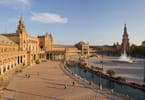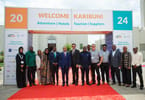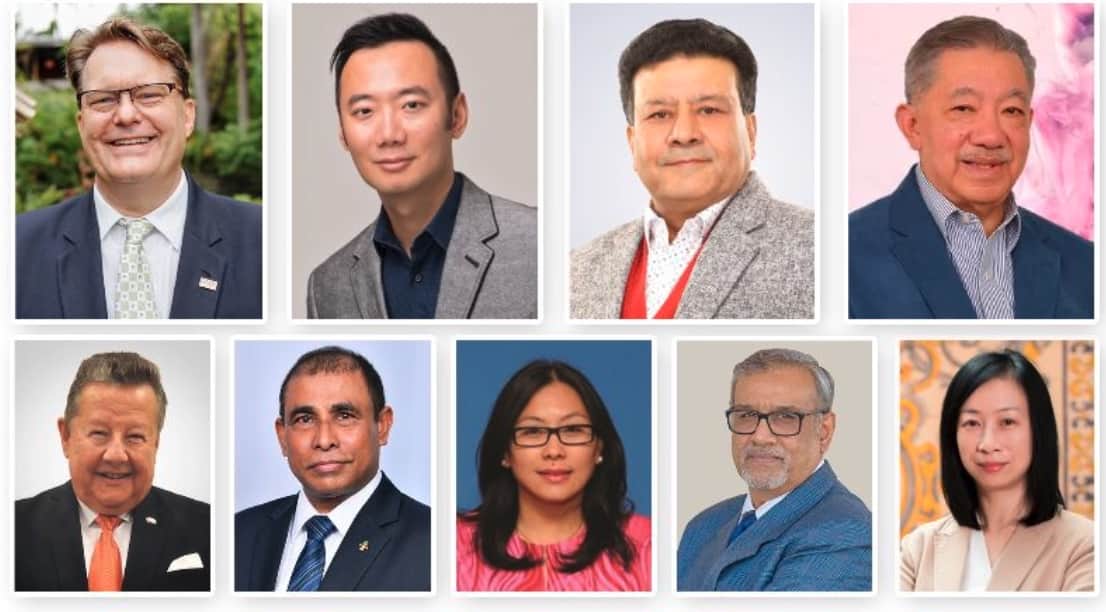KAMPALA, Uganda (eTN) – This latest and 3rd edition of the East African Community’s regional meeting with the local and international media took off earlier yesterday, in the presence of the EAC’s Secretary General Amb. Juma Mwapachu and formally opened by the Ugandan first deputy prime minister and minister for EAC Affairs, Eriya Kategaya. Present at the summit were also for the first time members of the East African judiciary body, the Arusha-based East African Court of Justice.
All the relevant regional media organizations and media houses, including those from the radio and TV sector, were represented in Kampala, but notably the bosses were joined by a large number of “ordinary scribes,” who had come to engage the EAC, government representatives and their own bosses over the day to day concerns of journalists in the face of often rather draconian press laws, selectively employed as and when found to serve a purpose, making the word “partnership” between governments, the EAC and the media an issue of ongoing arguments.
The questions mainly raised, how far responsible journalism extends to and where the government would like to see limits to issues reported and highlighted in the regional media, will without doubt continue long after this current summit has ended with a solution as distant as ever.
The theme of the meeting was “EAC’s Ten Years of Progress: The Media as Partners in Promoting Deeper Integration.” Subsequently, the opening speakers, including the chairman of the East African Business Council (EABC), the regional private sector apex body, all commented on the opportunities for the media to portray the region as a single area for investments and to highlight the progress made over the past decade. The EABC in fact co-sponsored the meeting to highlight the close interaction between the business community and the media in the region, also wanting to use the one-on-one sessions with the journalists present to promote their vision for a fully integrated Eastern Africa.
Subsequent speakers went into a historical discourse way back to the notorious “Berlin Conference,” which divided Africa among the colonial masters of those years and caused much of the disunity, territorial squabbles and wars and ongoing disputes perpetuated until today. It was therefore found that all the more important to fast track the economic and political integration of Eastern Africa, now comprising the countries of Uganda, Tanzania, Kenya, Rwanda and Burundi, while waiting for the Southern Sudan to be able to join.
Further reference was made on the opening day to the breakup of the “first” EAC in 1977 before turning to the current bickering among politicians and countries over the speed of the integration process and the various non-tariff barriers erected between them to maintain the status quo a little longer.
As the day went on, these issues came to the forefront time and again, making it clear, especially through contributions from the “floor” by “ordinary scribes” that any blue-eyed notion of a quick fix solution to the common problems in Eastern Africa will still take a while before the ultimate goal of unity can be accomplished and the “wananchi” (Kiswahili word for people) of Eastern Africa can once again travel freely across the then invisible national borders, like it was during the “first” edition of the EAC.
It was appreciated though by all present that indeed the media have a most important role to play to incrementally break down the dividing factors and promote the integrating elements across the EAC.
An especially outstanding presentation was given by veteran journalist Jenerali Ulimwengu from Tanzania, whose pointed remarks and humorous sidekicks earned him the equivalent of a standing ovation from the plenary session, setting the challenge of quality for those speaking after him.
The head of the Nation Media Group who spoke just before lunch equally mesmerized the audience, and added humorous laughter when referring to a “trial run” by some journalists in the early days of the EAC, and their narrative on film of the “close encounters” with bureaucracy. Each having been given US$500 for the purpose of changing from one currency to the next, before at the end of the trip in Nairobi then again purchasing dollars, they ended up with exchange losses of a staggering 57 percent, or had a sum of US$224 left, the balance having gone into feeding the forex bureaus.
At least they were spared the visa fees, which would have cost this correspondent another US$150 US for Kenya and Tanzania, before the fees were halved in the face of the global recession, leave along the extra charges for taking one’s car across the borders, i.e. temporary license fees, extra insurance and the usual TKK as we call it here, otherwise referred to as chai or in English a little bribe.
In any case, all of this underscores the need to integrate on the fast track, make cross border trade and commerce – and tourism for that matter – more cost efficient and give better value for the money the tourists bring with them.
The tourism attractions, across all the five East African Community member states, are already of global reknown – and this exactly was the challenge to the East African Community secretariat and the ministers and members of parliament present at the summit.
The day ended with time and opportunity to mingle and meet fellow scribes from the rest of Eastern Africa and down a few beers, appropriate for a weekend night.
WHAT TO TAKE AWAY FROM THIS ARTICLE:
- All the relevant regional media organizations and media houses, including those from the radio and TV sector, were represented in Kampala, but notably the bosses were joined by a large number of “ordinary scribes,” who had come to engage the EAC, government representatives and their own bosses over the day to day concerns of journalists in the face of often rather draconian press laws, selectively employed as and when found to serve a purpose, making the word “partnership” between governments, the EAC and the media an issue of ongoing arguments.
- As the day went on, these issues came to the forefront time and again, making it clear, especially through contributions from the “floor” by “ordinary scribes” that any blue-eyed notion of a quick fix solution to the common problems in Eastern Africa will still take a while before the ultimate goal of unity can be accomplished and the “wananchi” (Kiswahili word for people) of Eastern Africa can once again travel freely across the then invisible national borders, like it was during the “first” edition of the EAC.
- Further reference was made on the opening day to the breakup of the “first” EAC in 1977 before turning to the current bickering among politicians and countries over the speed of the integration process and the various non-tariff barriers erected between them to maintain the status quo a little longer.






















